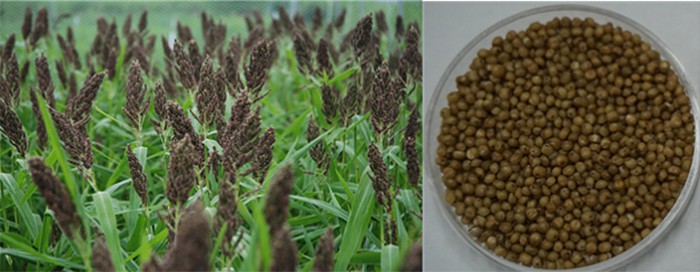
Studies show that a certain type of millet, Echinochloa frumentacea, has anti-diabetic and anti-inflammatory properties. Pictured is a new variety of this millet, borajik millet (보라직), that can be harvested in just 85 days.
Studies have proven that a certain type of millet, Echinochloa frumentacea (잡곡 식용피), has both anti-diabetic and anti-inflammatory properties.
The Rural Development Administration (RDA), in cooperation with Kyungpook University, announced the results on Nov. 9 after a series of tests that had been conducted on lab animals.
Up until Joseon times, Echinochloa frumentacea was a grain harvested in fields larger than 100,000 hectares. However, as rice became a subsistence crop with the advent of industrialization, consumption of this type of millet diminished. The grain is known to contain compounds like luteolin and kaempferol, a yellow pigment found in plants, that have whitening and anti-oxidative properties.
To prove the anti-diabetic effects of the millet, researchers conducted experiments on groups of diabetic mice, divided into control groups and experimental groups. After feeding the mice in the experimental group an extraction of millet compounds mixed in 80 percent ethanol over a course of eight weeks, they found that the mice in this group had 30 percent lower glucose and cholesterol levels than mice in the control group.
It was this ethanol compound that was shown to have anti-inflammatory properties. Dividing the mice into three groups, with one as the control group, researchers fed one group 600 mg/kg and the other group 1,200 mg/kg for one week. They then induced inflammations in the mice, and monitored their state over 24 hours. What they found was that the mice that had taken 600 milligrams showed 20 percent less inflammation than the mice that took none of the compound, while the mice that had taken 1,200 milligrams showed almost no signs of inflammation.
Based on these positive results, the RDA developed a new variety of millet, called borajik millet (보라직), that produces high yields in just 85 days. Unlike some other grain, borajik millet can be reaped with a combine harvester.
“Echinochloa frumentacea is a type of grain that can replace rice and is easy to harvest,” said an RDA representative. “You can mix the grain into your rice for a healthier meal, or use it to make noodles and porridge. It’s regarded these days as a versatile, health-conscious ingredient.”
By Lee Hana
Korea.net Staff Writer
Photo: RDA
hlee10@korea.kr























